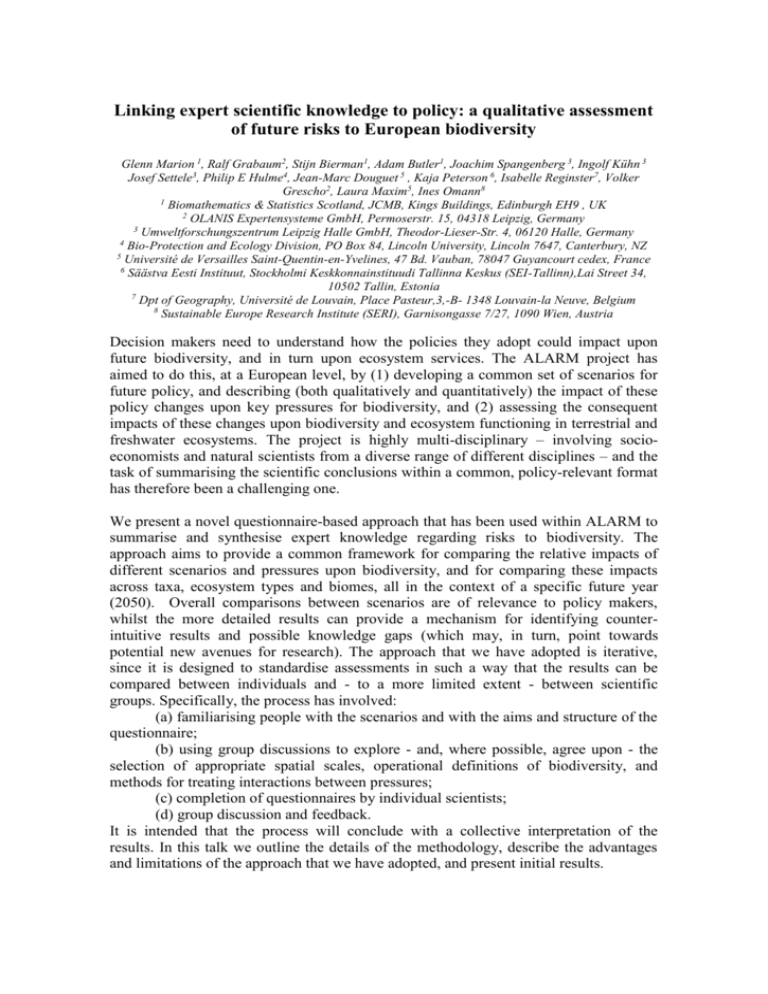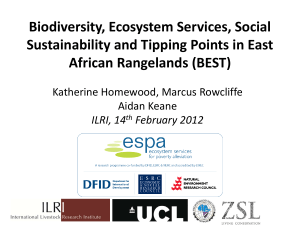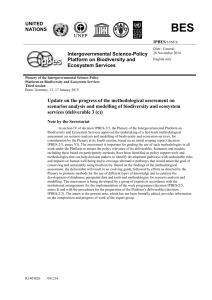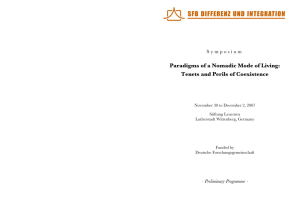Linking expert scientific knowledge to policy: a qualitative
advertisement

Linking expert scientific knowledge to policy: a qualitative assessment of future risks to European biodiversity Glenn Marion 1, Ralf Grabaum2, Stijn Bierman1, Adam Butler1, Joachim Spangenberg 3, Ingolf Kühn 3 Josef Settele3, Philip E Hulme4, Jean-Marc Douguet 5 , Kaja Peterson 6, Isabelle Reginster7, Volker Grescho2, Laura Maxim5, Ines Omann8 1 Biomathematics & Statistics Scotland, JCMB, Kings Buildings, Edinburgh EH9 , UK 2 OLANIS Expertensysteme GmbH, Permoserstr. 15, 04318 Leipzig, Germany 3 Umweltforschungszentrum Leipzig Halle GmbH, Theodor-Lieser-Str. 4, 06120 Halle, Germany 4 Bio-Protection and Ecology Division, PO Box 84, Lincoln University, Lincoln 7647, Canterbury, NZ 5 Université de Versailles Saint-Quentin-en-Yvelines, 47 Bd. Vauban, 78047 Guyancourt cedex, France 6 Säästva Eesti Instituut, Stockholmi Keskkonnainstituudi Tallinna Keskus (SEI-Tallinn),Lai Street 34, 10502 Tallin, Estonia 7 Dpt of Geography, Université de Louvain, Place Pasteur,3,-B- 1348 Louvain-la Neuve, Belgium 8 Sustainable Europe Research Institute (SERI), Garnisongasse 7/27, 1090 Wien, Austria Decision makers need to understand how the policies they adopt could impact upon future biodiversity, and in turn upon ecosystem services. The ALARM project has aimed to do this, at a European level, by (1) developing a common set of scenarios for future policy, and describing (both qualitatively and quantitatively) the impact of these policy changes upon key pressures for biodiversity, and (2) assessing the consequent impacts of these changes upon biodiversity and ecosystem functioning in terrestrial and freshwater ecosystems. The project is highly multi-disciplinary – involving socioeconomists and natural scientists from a diverse range of different disciplines – and the task of summarising the scientific conclusions within a common, policy-relevant format has therefore been a challenging one. We present a novel questionnaire-based approach that has been used within ALARM to summarise and synthesise expert knowledge regarding risks to biodiversity. The approach aims to provide a common framework for comparing the relative impacts of different scenarios and pressures upon biodiversity, and for comparing these impacts across taxa, ecosystem types and biomes, all in the context of a specific future year (2050). Overall comparisons between scenarios are of relevance to policy makers, whilst the more detailed results can provide a mechanism for identifying counterintuitive results and possible knowledge gaps (which may, in turn, point towards potential new avenues for research). The approach that we have adopted is iterative, since it is designed to standardise assessments in such a way that the results can be compared between individuals and - to a more limited extent - between scientific groups. Specifically, the process has involved: (a) familiarising people with the scenarios and with the aims and structure of the questionnaire; (b) using group discussions to explore - and, where possible, agree upon - the selection of appropriate spatial scales, operational definitions of biodiversity, and methods for treating interactions between pressures; (c) completion of questionnaires by individual scientists; (d) group discussion and feedback. It is intended that the process will conclude with a collective interpretation of the results. In this talk we outline the details of the methodology, describe the advantages and limitations of the approach that we have adopted, and present initial results.








